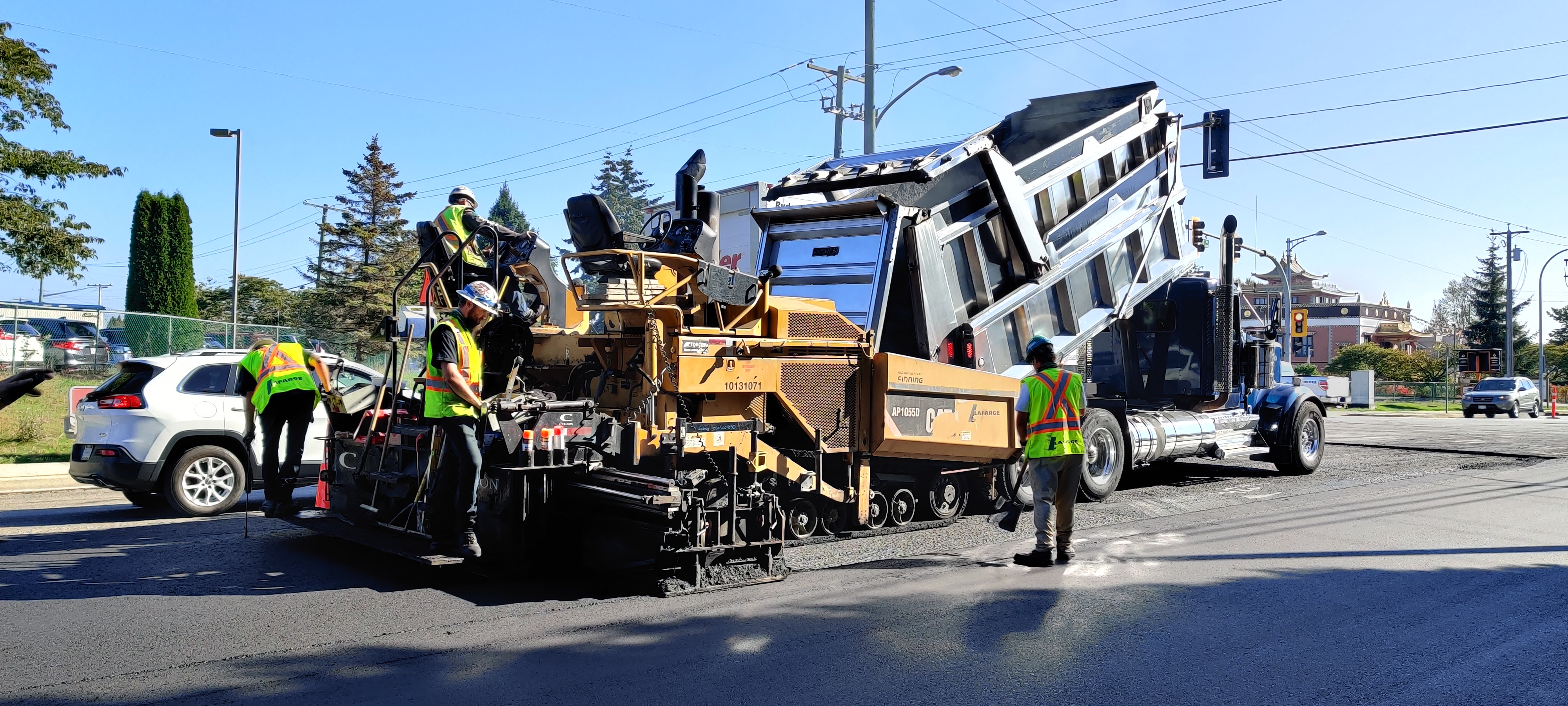
Recycled Asphalt Pavement Project
Richmond, British Columbia, Canada
George Duncan, Chief Administrative Officer (Retired)
All asphalt roads in Canada must be replaced regularly, creating hundreds of thousands of metric tons of asphalt waste that is disposed of in landfills. However, asphalt waste is a valuable resource that can be reclaimed. The National Zero Waste Council (NZWC) encourages Canadian cities to use recycled asphalt pavement (RAP) in their paving mix to increase efficient use of materials, reduce the energy required to extract raw materials and manufacture asphalt, and minimize carbon emission and waste generation. Canadian cities have generally limited the proportion of RAP in road pavement to 10 percent because of concerns about the product’s durability.
The city of Richmond undertook a pilot project to test the effect of using a higher percentage of RAP in its road pavement as part of its continued commitment to sustain-ability by moving toward creating a circular economy—one in which materials are reused instead of discarded. The city engaged and collaborated with regional industry stakeholders, including producers, consultants, contractors, municipalities, Metro Vancouver, and the B.C. Ministry of Transportation and Infrastructure, to ascertain the feasibility of using a 40-percent RAP in pavement mix. The industry provided feedback that a monitored pilot project would be critical for building industry capacity and buyer confidence.
Richmond collaborated with NZWC and Lafarge Canada, a provider of sustainable building materials, to test the performance of the 40-percent mix throughout its life cycle. In November 2020, Richmond became the first Canadian city to apply 40-percent RAP on a municipal road—in this case, an 800-meter (approximately one-half mile) segment of a high-traffic volume arterial road. The asphalt pavement performance is being monitored annually and so far the project has been very successful.
The costs for the pilot were included in the annual paving program, and the city negotiated to keep the unit cost for the reclaimed asphalt mix similar to the cost of the typical mix. As the use of higher percentage RAP becomes more common, the city expects to see savings resulting from efficiencies in processing greater volumes. Given that this project did not result in additional expenditures, the use of RAP is very sustainable for the city in the future.
Outcomes of the pilot project include:
- More than 2,000 metric tons of reclaimed asphalt pavement have been diverted from landfill and used as raw material in new asphalt pavement.
- Monitoring data has confirmed that 40-percent RAP pavement performs as well as conventional asphalt pavement and that no additional pavement maintenance is required.
- The technology used for production and application of the 40 percent RAP is currently in place regionally; no specialized equipment was required.
- The city has introduced new purchasing practices to leverage the use of RAP, which aligns with the city’s sustainability and circular economy initiatives.
- Greenhouse gas emissions have been reduced because of decreased extraction and transportation of virgin materials.
Given the success of the program, the city created an online toolkit to help other local governments introduce RAP to further their sustainability goals while maintaining quality. By early 2022, Richmond had used 40-percent RAP on 4,740 meters (about three miles) of multi-use pathways, as well as on the arterial road.
In planning and implementing the pilot, Richmond learned the following lessons:
- Early engagement of industry stakeholders was critical in making the pilot feasible and securing regional transition toward a circular economy.
- Regional stakeholders became confident enough to implement their own pilot projects to increase the RAP proportion in road pavement.
Richmond has raised awareness of the city’s contribution by publicizing the project’s environmental and sustainability benefits, conducting peer-to-peer workshops, organizing webinars to promote the toolkit, continuing regional engagement, and maintaining an open dialogue with stakeholders.
To date, the feedback has been positive, and several municipalities have shown an interest in implementing similar projects.
